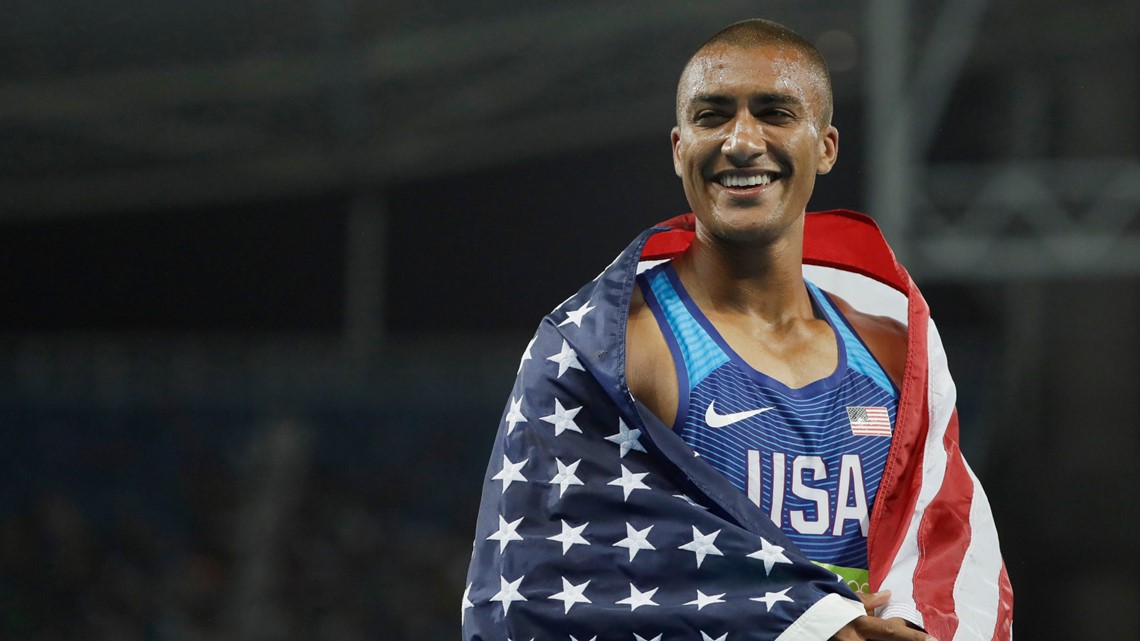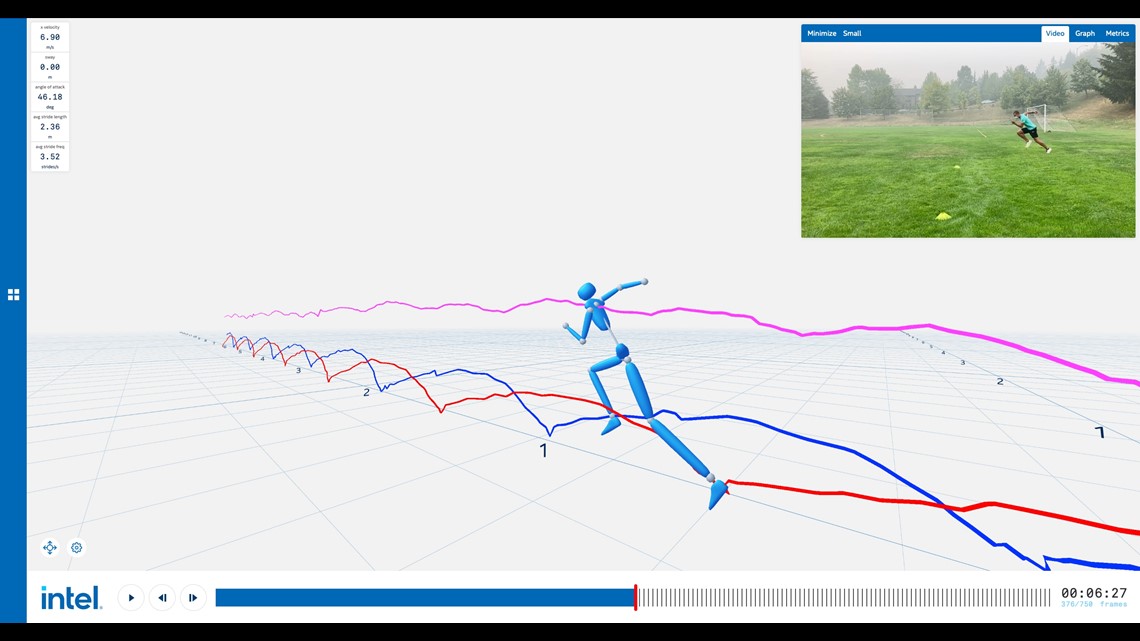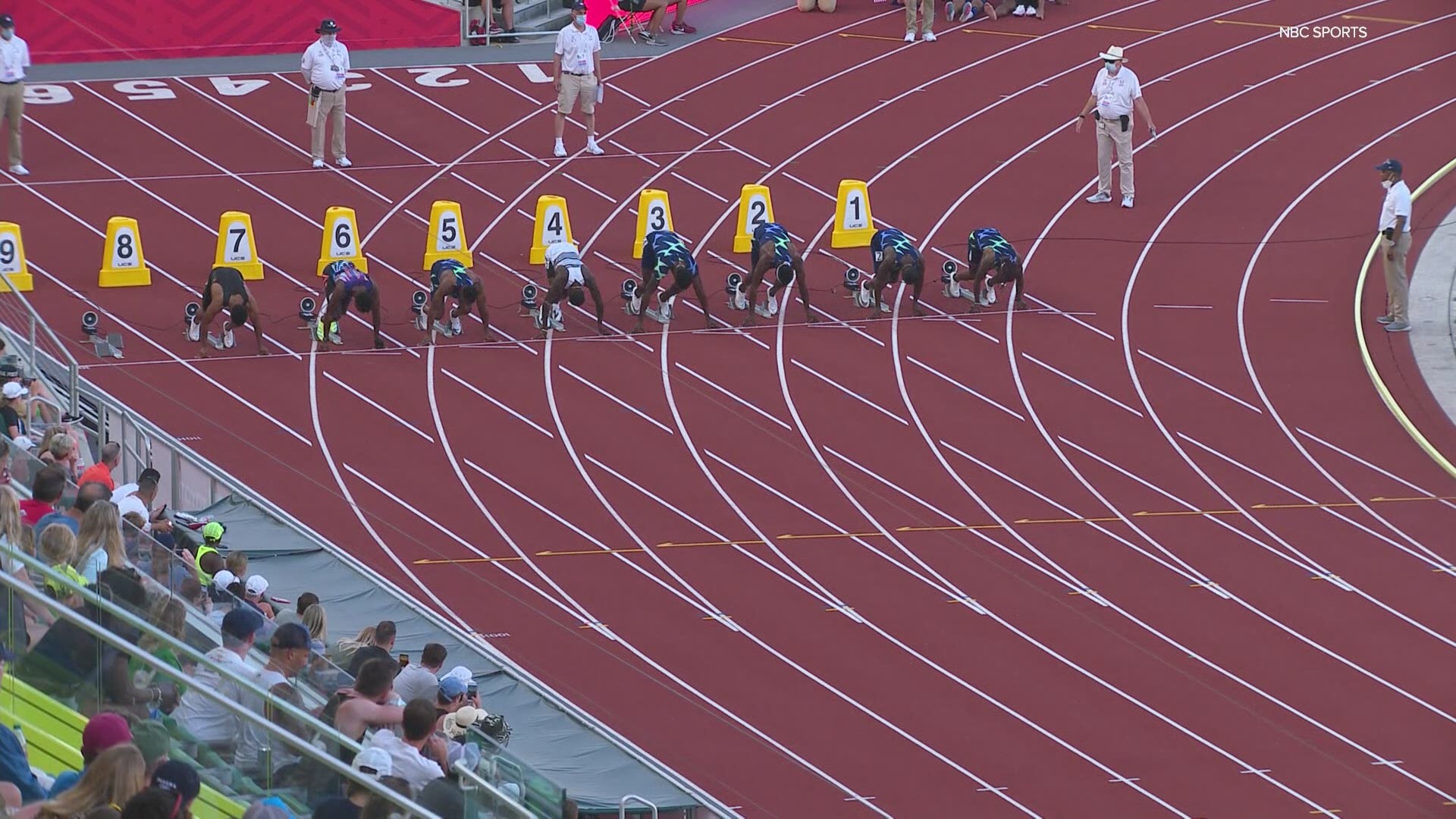PORTLAND, Ore. — If you're a big fan of the track and field events at the Olympics, there will be a new replay feature to watch for in the Tokyo games. It's called 3DAT, or 3D athlete tracking. TV analysts and broadcasters will use it to tell the story of the fastest sprinters. It's technology developed in the Portland area from Intel.
Running is primeval. The instinct of fight or flight. But the fastest in the world train through nuance and repetition, perfecting each step in those lightning-fast 10 seconds of a 100-meter dash.
"It is unbelievable how subtle, how much is going on that the human eye cannot capture," said Ashton Eaton, the reigning Olympic champion in the decathlon. Eaton earned back-to-back gold medals in 2012's London games and the last summer games in 2016 in Rio. The Bend native and University of Oregon grad was hired by Intel, on Olympics sponsor, in 2019.


Eaton and some current Olympians, like sprinter Noah Lyles, have been working on 3DAT ever since. With no special suits or sensors on the athletes, 3DAT imports regular video, like from an iPhone or GoPro, and uses computer vision and artificial intelligence to create a digital skeleton of the person.
Pinpointing 22 locations on the body that track their movement, Intel processors provide data within seconds on the athlete's velocity, body angles, acceleration, stride length and more. It's information athletes and coaches have never had.


"Once [other athletes] learned I was working on it, they thought, 'What is that? Where can we get more? Can you show me anything else?' They were super excited," Eaton said with a laugh.
It's been difficult during the COVID-19 pandemic to find places or teams to test the technology. Eaton himself has done many laps around the track or at the starting block. He and his Intel Olympic Technology team have taken the technology to college football and NFL camps. Word of mouth has spread.
There's a possible future to see 3DAT at the NFL Scouting Combine and Intel has been getting calls from all kinds of sports leagues that want it. Imagine its utility for improving a golf or tennis swing. But 3DAT was originally developed for the Olympic TV audience and it debuted on NBC's coverage of the 2021 Olympic track and field trials in Eugene.
Eaton explained how the viewing audience will see it.
"So a race will run, and then normally you see a few replays that happen just showing different angles of athletes running, probably some slow-mo," Eaton said. "And then within that, you'll see the Intel technology displayed in a graphic."


Intel set up five cameras along the 100-meter length of the track at Hayward Field for the trials, and within seconds, ran the video through the system to generate a virtual track with a heat map of color gradients on each running lane. The gradients go from blue to green to yellow to orange to red, which represents the top speed on the track at that moment.
"Look out for how long they're able to stay in the red zone and also when they hit top speed," said Jonathan Lee, director of sports performance technology at Intel. "So we'll put a yellow line on the graphic that shows this is when the athlete hits her top speed, and you can see that some hit earlier, somebody hit it later and being able to hit that top speed at just the right time is really key to winning."
The 3DAT cameras will also be positioned on the long stretch of the Tokyo Olympic track. You'll see the technology used and talked about by analysts and broadcasters for the 100-meter, 200-meter and 400-meter dashes and possibly the hurdles.
While Eaton long ago made the family decision not to travel to the games because of COVID risks for his young son, he'll be on live headset in Portland, with his Intel team there.
"There is almost the same amount of pressure to this as there was when I was an athlete," Eaton said. "It's the excitement to pull something off and do something new and do something interesting."
Eaton says he would have loved to have this kind of information when he was competing.
"I would have loved to see it perhaps, at the U.S. trials beforehand. And then as I go to the games, maybe re-strategize," he said. "But for a 100-meter athlete or 200-meter athlete, to be able to cross the line and perhaps look at the video board or see something later that night showing here's how fast you are compared to everybody else. And here's where you hit that speed, here's your 100-meter race and how it ended up that way, would have been insanely useful to know."
Track and field events start Friday, July 30. The first event you'll see with 3DAT is the women's 100-meter dash.

